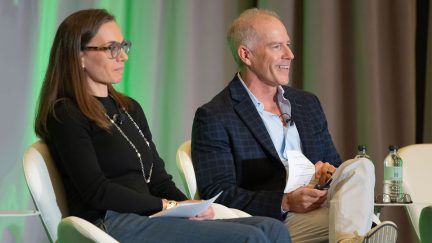Want the latest retirement plan adviser news and insights? Sign up for PLANADVISER newsletters.
Program Aims to Help Advisers Juggle Roles
The program is a business management and personal development structure, whose name reflects the dual responsibilities of practice management and delivery of meaningful and insightful financial guidance.
The CEO Advisor Institute combines business management, personal and professional development content, and investment thought leadership. The curriculum is designed to enhance the ability of advisers and their teams to address the complex challenges facing their wealthiest clients. According to a 2011 study conducted by Cerulli Associates, practice management was the second-most requested resource from advisers.
OppenheimerFunds describes the program as combining right-brain creativity with left-brain analytics. “OppenheimerFunds is committed to delivering a consultative platform to help advisers achieve their business goals,’ said John McDonough, director of national sales. “To demonstrate that commitment, we have changed the formal titles of our sales force to senior adviser consultants and regional adviser consultants.”
(Cont’d…)
The program consists of three components: keynote presentational content, a multimedia Web-based support structure and more than 100 OppenheimerFunds consultants. The current library has three modules:
- Compelling Conversations are designed to help financial advisers with nine critical recurring conversations with clients and prospects. Each aims to crystallize the value of the adviser and help clients take the appropriate actions to pursue financial goals.
- Building a Professional Practice delivers an architectural framework to help advisers build professional practices. The framework is built on the twin foundations of a comprehensive wealth management approach and an exceptional client service platform.
- Building a Life on Purpose teaches advisers how to achieve work/life balance.
OppenheimerFunds’ field force has been immersed in CEO Solution, the internal component of the CEO Advisor Institute, for more than two years, in preparation for delivering a consultative platform for advisers while continuing to provide excellent product and investment insight.
The Institute, led by 25-year industry veteran Paul Blease, was developed in collaboration with Duke Corporate Education. Blease joined OppenheimerFunds in December 2011 as director of the CEO Advisor Institute.
Complexity is the single greatest challenge facing financial advisers today, according to Blease. “In the last two decades we’ve seen an explosion of new investment products and services, a proliferation of new technologies, and an unprecedented confluence of political, economic and financial challenges,” he said. “The CEO Advisor Institute helps advisers manage their sophisticated practices, and deliver meaningful advice and extraordinary service in order to separate themselves from the competition.”
More information is available at the CEO Advisor Institute.
You Might Also Like:

Rethinking Opportunities for RIA Growth

Advisers Step Up as Clients Face Market Uncertainty
